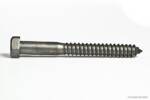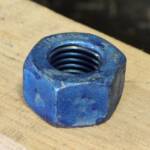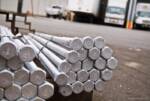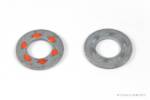Anthony's FAQs
As the ASTM F3125 specification becomes more prevalent, the issue of configuration may be a source of confusion. The main reason is that in the past, ASTM A325 has been limited a heavy hex head structural bolt only, which implies a structural bolt thread length with Unified National Coarse thread. With the implementation of ASTM F3125, A325... Read more

It is often asked why some high strength hex nuts that are supplied with high strength bolts appear to be blue or some other color. This is normally the case with galvanized, high strength, heavy hex nuts and the reason for this is because of the wax lubricant applied to the nuts. According to the... Read more

A common question when deciding whether hot-dip galvanizing is an adequate corrosion resistant coating for a fastener is, “How long will the galvanizing last before the steel begins to corrode?” The last thing you want to do is install a bolt in a corrosive environment, only to have it begin to rust a year later. Unfortunately... Read more

Load indicating washers are used to indicate the achievement of a specified minimum bolt tension. The ASTM specification covering load indicating washers is F959 and has two different types; 325 (type 1 and type 3) and 490 (type 1 and type 3). When used, the washer is typically placed beneath the head of the bolt. As the... Read more

SAE (AISI) 1045 in an “as rolled” condition will likely not meet the mechanical requirements of ASTM F1554 Grade 55. ASTM F1554 Grade 55 is a finished fastener specification with mechanical and chemical requirements. SAE 1045 has chemical requirements associated with it; however there are no mechanical requirements since it is a raw material specification, not a... Read more
As far as the mechanical and chemical makeup of both A320 Grades L7 and L43, there isn’t much of a difference at all. The main difference is that the raw material used to make A320 L7 fasteners is typically 4140, whereas the raw material used to make A320 L43 is 4340. Below is information found... Read more
When threading bolts, the two most commonly used methods are cut threading and roll threading. We are often asked if bolts which have been roll threaded have a full body diameter or a reduced body diameter. Depending on the type of fastener, the answer is both. When Portland Bolt produces bolts with rolled threads, we... Read more

Portland Bolt is open from 6:00 AM to 5:00 PM Pacific Time, Monday through Friday. To be able to accommodate the needs of our customers across the country, we stagger the workday between our salespeople. Our Interactive Shipment Destination Map provides detailed shipping information showing that the second-largest concentration of Portland Bolt shipments is the... Read more
Portland Bolt is often asked which grade should be used in a structural application. More specifically, when asked what grade is required for a particular fastener that we are receiving an inquiry on, companies will often reply “it’s a structural grade” or “it’s for a structural application”. This usually is the result of a fastener being specified... Read more
F1554 Grade 55 anchor bolts are not always weldable. The weldability of Grade 55 is a supplemental requirement referred to as “S1”, which must be specified. According to the ASTM F1554 specification under section S1.1, “This supplemental section, by chemical composition restrictions and by a carbon equivalent formula, provides assurance of weldability.” For F1554 Grade 55... Read more
